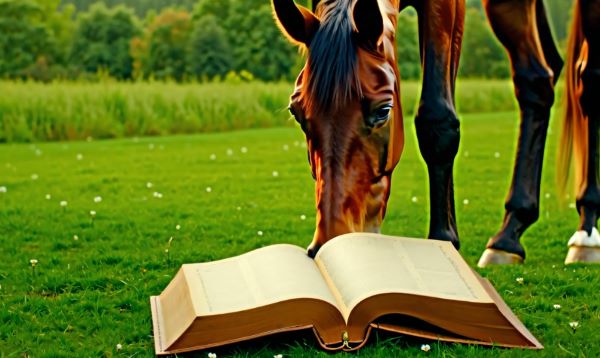The greatest struggle facing the natural horseman, is keeping horses in the wild. Wild horses direct us. They teach us how to care for our domestic horses. And when we begin to stray, they draw us back in to line.
Jaime Jackson observed wild horses. The way many of us look at our horses’ hooves was transformed.
Pat Parelli and Monty Roberts observed wild horses. So many dropped the whip, and saw better results for it.
And Pete Raimey, who specialises in founder rehabilitation, said this. “I’ve had the privilege of working with some of the finest horses, for the finest horse owners in the world. Understand that after two minutes with the wild ones, I knew that I had never seen a true horse.”
Why in 1919, did the American Government issue a bulletin dealing with ‘wild or worthless’ horses? And why today, are there still those who call wild horses “garbage”?
200 years ago, there were 2-5 million horses on the American Plains. Today there are fewer than 50,000. It’s a steep drop. And as wild horse numbers fall, our ignorance can only rise.

And now onto Gordon.
“Learning to ride horses without the guidance of an experienced teacher can be challenging and even risky. Although there are countless online resources, books, and tutorials available, horseback riding is a highly nuanced skill that involves both physical coordination and understanding horse behavior. Self-teaching can lead to gaps in knowledge or bad habits, which can be difficult to unlearn later and may even be unsafe.”
“One of the most important aspects of horse riding is developing “feel,” or the ability to read a horse’s body language, mood, and reactions. This skill typically takes time to cultivate and is greatly facilitated by an instructor who can interpret these signs and teach riders to respond appropriately. Without a teacher, riders may miss these cues, which can result in miscommunication or unsafe situations with the horse. Additionally, teachers can provide guidance on posture, balance, and handling techniques that are essential for effective riding but are often subtle and hard to self-correct but I see why people learn without teachers. The price can be expensive but sometimes it’s worth spending a little to learn and master horseriding.”

“Are we still intent on learning without teachers? Safety is another critical concern. Horses are large, powerful animals, and even small errors in technique or handling can lead to accidents. Experienced instructors teach not only riding but also safe handling practices, which are just as important as riding skills in preventing injury to both the rider and the horse. A good teacher can identify areas of improvement and correct mistakes immediately, which is often far more effective than trying to learn from a video or written instructions alone.”
“Ultimately, while it’s possible to make some progress alone, learning with a qualified teacher offers the benefit of guided, safe, and efficient skill development. For those serious about learning to ride well and caring for horses responsibly, the expertise of an experienced instructor remains invaluable. Hope this helps but Are we still intent on learning without teachers? Gordon”
Next up
Before the Spanish arrived to North America, there were ZERO horses on the plains. If you’re going to make an argument about wild horses, address them where they actually started – Eurasia.
Actually, as Christine Dorothy Elton says below, horses were in America first when all the continents were connected then after they separated horses became extinct in America. The Spanish REintroduced horses. They originated in America. Before you say someone is wrong, do you research.
Way to go Lily! So refreshed to hear someone speak up against “educated” know it alls who know nothing. Why is it that some small minded people would rather look for “mistakes” than join in a forum concerning the welfare of horses.
It all makes such sense,the little tips are great and only tellme how stupid most of us are for not thinking of it sooner-me includid!!
😳 i have a question we have a 13 year old horse a TB rescue and he is limping its a sprain we keep treating it and he re-injures it !!!we don’t have a closed stall but we do have a stall what can we do for him??
abby, give him more time to heal, and start learning about biomechanics and foot balance. 😕
Actually from what I have read about the history of horses, they originated in North America then migrated to Asia,Europe & Africa across the Bering Straits land bridge when they were very small before the iceage.
But how many of us actually go and spend days observing the wild horses?
Try just watching horses in a field when there’s a herd. It’s really helpful. 😀
I totally agree. Why hurt these amazing animals! They are probably much smarter than many of us, humain. Their only crime is that they don’t speak our language and we are not smart enough to decode theirs
I live in a place where wild mustang herds are all around me. I feel privileged to be among them daily. I learned from my trainer that horses hooves naturally chip off. And when left in the wild their hooves return to the perfect shape. I thought that was cool to know.
Actually, the horse in Ice Age was no bigger than a dog. Called the “Eohippus” or the “Dawn Horse.” The Dawn of the Ice Age.” They were so little, they ate grass instead of hay. But as their legs grew longer, to enable them to see when in deep brush or weeds, in time could reach higher plains and developed legs and height to make it.
Can you learn horseback riding safely without a teacher?
While possible, it’s safer and more effective to learn with a qualified instructor who can guide technique, safety, and understanding of horse behavior.